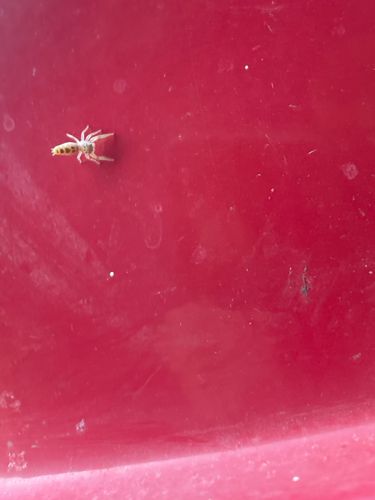Jumping Spider
Scientific Name: Salticidae (various genera)
Order & Family: Order: Araneae, Family: Salticidae
Size: Typically 1 to 25 mm (0.04 to 1 inch) in body length, depending on the species.

Natural Habitat
Widely distributed in various habitats including gardens, forests, grasslands, and even indoors on walls and ceilings. They prefer sunny, open areas.
Diet & Feeding
Jumping spiders are active predators, ambushing and pouncing on their prey. Their diet primarily consists of other small arthropods, including many insects like flies, mosquitoes, and small beetles, as well as other spiders.
Behavior Patterns
Unlike most spiders, jumping spiders do not typically spin webs to catch prey. Instead, they are known for their excellent vision, agility, and hunting prowess, using their keen eyesight to stalk and ambush prey. They can jump impressive distances for their size, hence their common name. They are often seen during the day, actively searching for food.
Risks & Benefits
Generally, jumping spiders pose no significant risk to humans. Their venom is not harmful to humans, and bites are rare and typically result in only mild, localized irritation. They are beneficial to ecosystems and human environments as natural pest control, preying on many common household and garden insect pests.
Identified on: 9/4/2025